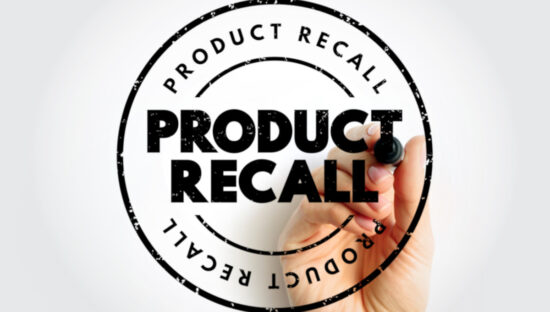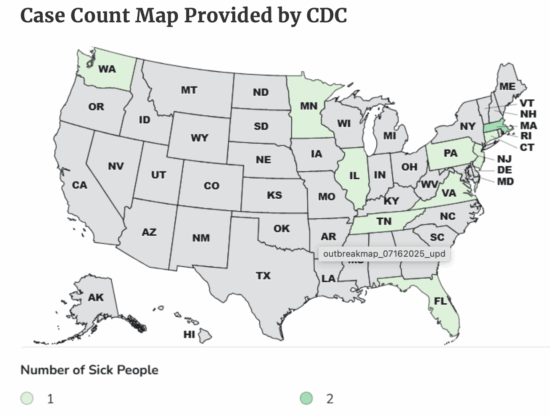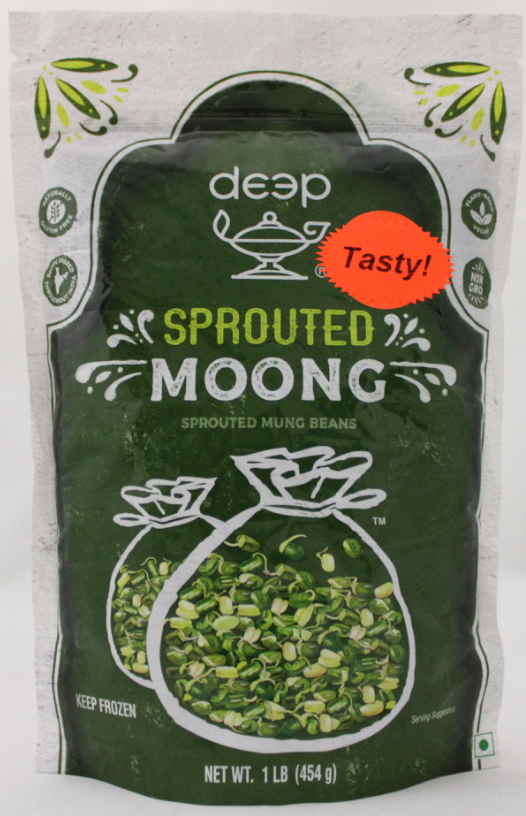— OPINION —
Imagine buying a bag of shrimp, only to learn weeks later that it may have been exposed to radiation. Or opening your child’s lunchbox to find peanut butter later linked to a nationwide Salmonella outbreak. Food recalls are not just bureaucratic corrections; they are shocks to the system, forcing us to question the safety of what we feed our families.
In a nation where millions trust their food supply every day, a recall is more than just a regulatory action: it’s a breach of public confidence. On average, about 300 million to 500 million pounds of food are recalled each year in the United States. For every 1 pound of USDA-regulated food recalled, approximately 2.5 pounds of FDA-regulated foods are recalled. The FDA has oversight of about 80 percent of our food supply.
A recall, by definition, is the removal of a product from the market because of safety risks such as contamination, mislabeling or the presence of foreign materials. While every recall demands swift, serious attention, a few rise above the rest . . . not just for their severity, but for their scale, their strangeness, or the questions they raise about the systems meant to protect us.
Consider the ongoing multi-state recall of potentially radioactive shrimp sold under Walmart’s Great Value label as well as other brands. The FDA linked this problem to shipping containers out of Indonesia. This unusual recall has raised eyebrows and alarm alike. Radiation exposure is not a typical threat on the American dinner table — and that’s precisely what makes this incident so unsettling.
This is hardly the first time American consumers have faced disturbing headlines about food safety. While the following list can be easily debated or added to, here are some notable recalls:
In 2009, the Peanut Corporation of America was responsible for what remains the largest food recall in U.S. history, after a Salmonella outbreak linked to its facilities triggered the recall of over 3,900 products across 360 companies. Nine people died, more than 700 fell ill, and several executives were ultimately convicted in landmark criminal trials for knowingly shipping tainted goods.
That same sense of shock rippled through the public in 2007 when Topps Meat Company recalled over 21 million pounds of beef, the second largest recall at the time, because of E. coli O157:H7. Once one of the largest makers of frozen hamburgers, the company filed for bankruptcy and closed its business in the aftermath, but the message was clear: system-wide breakdowns in food safety can be fatal for consumers and corporations alike.
In 2022, a multi-state Salmonella outbreak tied to Jif peanut butter led to the recall of dozens of products and a wave of secondary recalls by companies that had used Jif as an ingredient — a domino effect that revealed the interconnected fragility of the supply chain.
Then there was the 2009 recall of Nestlé Toll House cookie dough after E. coli was detected in raw, prepackaged Nestlé cookie dough sickening 77 people, hospitalizing nearly half of them. This was a wake-up call for the many Americans who viewed eating raw dough as harmless fun.
In 2015, the trusted Blue Bell Creameries brand faced its own reckoning after Listeria monocytogenes was discovered in its ice cream, prompting a full shutdown of operations and a nationwide recall. Three deaths were linked to the outbreak, and the situation, along with the $17.25 million in federal criminal penalties, became a major example of accountability in the food industry.
Even fresh produce hasn’t escaped scrutiny. The 2006 bagged spinach E.coli outbreak left three dead and nearly 200 ill, leading directly to the passage of the Food Safety Modernization Act (FSMA), one of the most significant reforms in American food safety regulation in decades.
Recalls are not only caused by typical foodborne pathogens. In 2019, Tyson recalled over 69,000 pounds of chicken patties after customers found metal shards in the product not once, but in multiple instances. And in 2013, frozen berries distributed through major chains were linked to a multi-state hepatitis A outbreak — rare in foodborne illness, and even rarer in frozen, processed fruit.
One cannot forget the Family Dollar Stores incident in 2022. Following a shocking FDA inspection of the company’s distribution center in Arkansas, all FDA-regulated products, from food and medicine to cosmetics and pet supplies, were recalled due to widespread rodent infestation and unsanitary conditions. The recall didn’t just highlight failures in pest control; it exposed deep cracks in oversight and risk management at the retail-distribution level. In 2024, the company, a subsidiary of Dollar Tree Inc., entered into a federal plea agreement that includes paying $41.7 million: the largest-ever monetary criminal penalty in a food safety case.
As food systems continue to globalize and automate, the challenges of traceability, contamination control, and regulatory enforcement grow more complex. But so do our tools for prevention. Advances in data analytics, supply chain transparency, and proactive inspections are shifting the paradigm from reactive recall to preventive action.
Still, as the radioactive shrimp and rat-infested warehouses remind us, threats can emerge from both the unexpected and the unthinkable. The future of food safety hinges not just on vigilance, but on the ability to act fast, rebuild trust, and ensure that every bite is free from fear.
Recalls will never disappear entirely, but the measure of progress is whether we treat them as rare safeguards or routine headlines. I write this as I am preparing to teach about recalls and as I work on a recall readiness project. However, 32 years after my own son’s death in the Jack in the Box E. coli outbreak, I still see too many failures treated as inevitabilities rather than preventable tragedies.
Until regulators are fully empowered, companies are held fully accountable, and consumers are fully protected, recalls will remain not just warnings, but indictments of a system that is too often reactive. The question is not whether the next recall will come — it’s whether we will finally have done enough to stop these failures before they reach our plates.
(To sign up for a free subscription to Food Safety News, click here)



